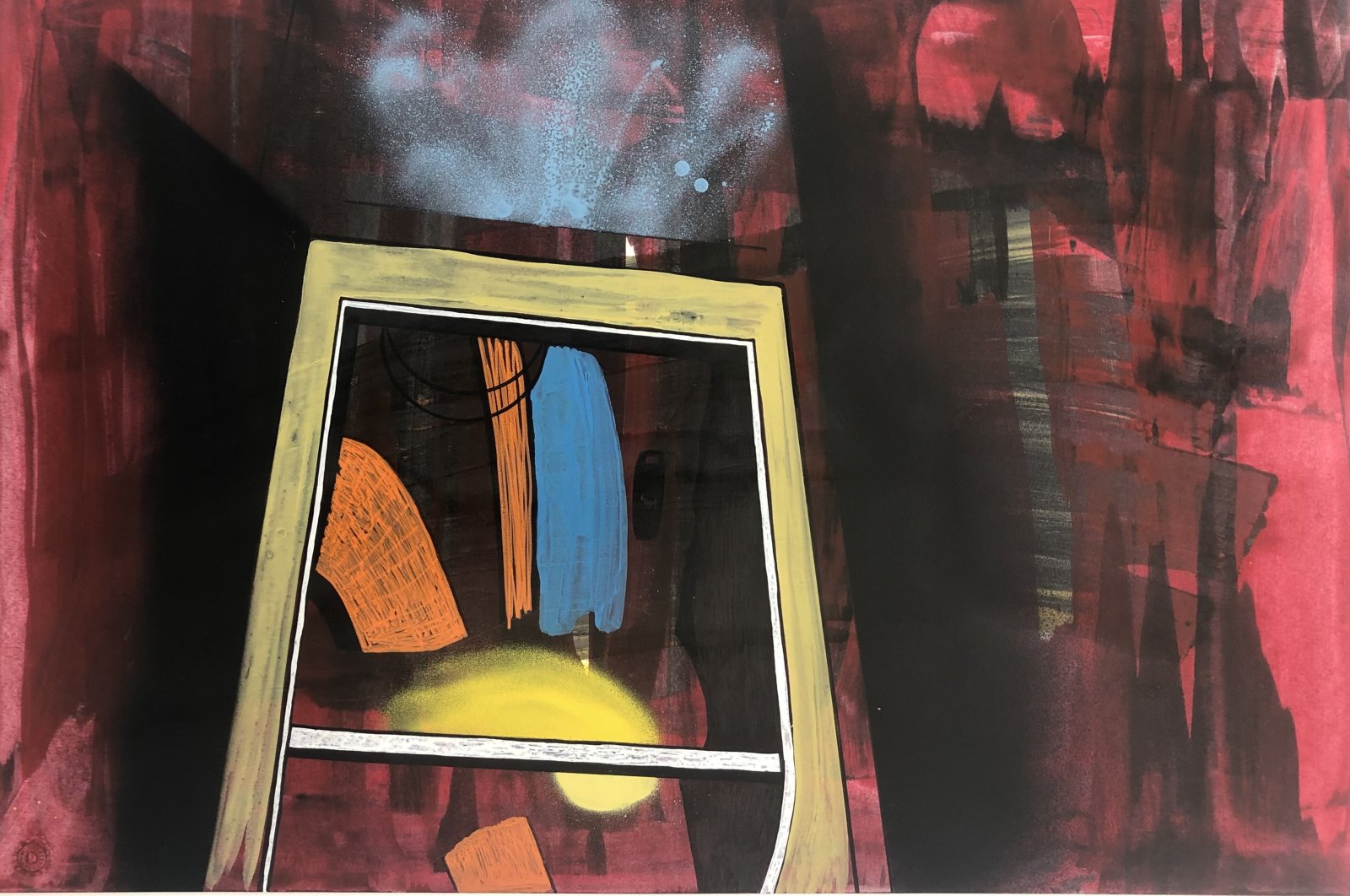
Some might argue that the internet is the new street in the art world and as commercial galleries have been slow at embracing contemporaneity, painters Mert Diner and Olcay Kuş have taken a retrospective route
What can be said about the sale of art painting in the late winter of 2022 will be about as interesting and important as the words that will be used to describe them. The series of unframed canvases by artists Mert Diner and Olcay Kuş at ArtOn Istanbul seem to clash with late modernism and its postmodernist relative, as the two movements grappled with the meaning and role of public appreciation when it comes to culture, visual literacy and the advancement of craft, concept and aesthetic.
From Rothko to Warhol, Basquiat to Bansky, the envelope of art world institutionalization has been pushed to the extreme and that unfolding is a matter of pleasure for contemporary artists in Turkey, who enjoy a particularly comfortable historical and geographical distance from the ostensible centers of cultural progress, as they have moved and shaken from New York to London, Paris to Berlin. Yet, with a naivety, young painters like Diner and Kuş still sing the gospel of what was once hot, now cool, with refreshing sincerity.

If there is anything that art might suffer from it is its passion for authenticity, a constant, almost obsessive fixation with how to define itself in terms of reality, perhaps comparable to the erratic shifts in millennial identity politics as checked by those alive who cannot forget the 20th century and its dizzying disarrays of multiple popular dissonances. And in the heart of Istanbul, Diner and Kuş are remembering a few unfaded traces of creative innovation, of how to see the world, to remake its fancies, reconsidering perception as a bias of perspective.
The difference would be, then, for example, whether someone is inside, or outside of a brick-and-mortar establishment, or, with reference to the Cold War and its unruly persistence, on which side of the wall. It would appear, then, in the greater contexts in which "Eye Level,” the exhibition at ArtOn Istanbul, is situated in time and space, that Diner and Kuş continue to pioneer the wrecking ball fantasy of certain street artists and diehard modernists to live and work at the core of salability, marketing their underlying ideas of youth communalism.
As was once seen
With improvisational bursts of black graffiti lines, traced like a man on the run, a piece of acrylic and spray paint on canvas by Diner entitled, "Half way” (2018) is, as its name suggests, halved into the flagrant spaciousness of a common field, such as a concrete slab standing upright on a sidewalk. It triggers thoughts of the inveterate modernists of paint and its opposites, such as Robert Rauschenberg, specifically his work, "Untitled (glossy black painting)” of 1951, which bears an uncanny resemblance to a whole wave of monochrome artists. Diner's oil and spray paint painting, "There might be something in there” (2018) has a classic abstract expressionist look.
The drive to bring the street into the gallery or museum was recently foregrounded in Istanbul by Arter, during the group exhibition, "Precaution.” Like the attitude of street culture, from muralists to sculptors, mosaicists and painters, ArtOn Istanbul is prompting a collaborative tone with "Eye Level.” Its title is a metaphor for evenness opposed to the elitism that stereotypes artists and their industries. By mixing and matching their artists in arresting ways, instead of strengthening the brutal competitiveness between fellow creatives, showing two painters whose works bear a number of similarities and resonances in their techniques and biographies is a welcome gesture.
Around and about
In an age when professional artists are looking forward to a post-pandemic life when capitalist work is seen as increasingly outmoded in favor of independent workplaces and personalized schedules, the amalgamation of the modern with the contemporary is an apt occasion to bring together the works of two artists whose works are in dialogue. That being said, paintings by Kuş maintain a style that is utterly distinct from Diner, closer to pop art with their vivid colors and use of letters, approaching cartoonish representationalism.
As in Diner’s works, Kuş encompasses conflicting aesthetic techniques within the frame of his canvases. In one piece, an acrylic collage with spray paint and ink on paper, "Untitled” (2021), there is a rectangle of a painting within the painting, its colors and shapes altogether unique from that of the abstraction behind it. In an iconic piece of his from the show, "Boom” (2018), he, again, used acrylic, spray paint, collage and ink on paper to affect a graffitied sensibility, as if he had tagged his own materials.
In her catalog essay for the show, Deniz Kırkalı needed material, as she opened with a nonchalant vision of her walking, thinking, on the way to meeting Diner and Kuş. Instead of discussing the artists after encountering them and their work, as most writer-curators would do quite immediately, she reflected on the road that led her to them, how, in the bustle of Istanbul, she attempts, whether consciously or not, to narrow the influx of sights that seem to force themselves upon her, and everyone who passes by.
The point that Kırkalı raised attempts to focus perceptive consciousness on what meets the eye, without any added effort, the natural course of sight while simply moving, on foot, through the urban jungle. It is curiously fascinating to imagine her route as she entertains the habits that she has formed going from one place to another. In her mind, the city becomes an architecture of memory, something out of Calvino, or in her referencing, the French philosopher Luce Irigaray, whose writings on intersubjectivity overlapped with the personal words of Kırkalı, the art painting of Diner, Kuş, and potentially everyone who truly looks at what they are seeing.
